The Sue Johnson knowledge bomb continues as she shows us how to choose compatible blood products and TEST them to make sure they are compatible. Plus, Sue tackles real-world case examples!

Susan Johnson, MTSM, MT(ASCP)SBB
The Last Three Steps of Pretransfusion Testing
Sue starts this interview with a discussion of how to use the information gained in step 2 (ABO, Rh, and unexpected antibody status) to choose the most compatible product for a blood recipient. She shares tips and tricks to best practice in choosing red blood cells, plasma, and platelets. Then, Sue describes the ins and outs of compatibility testing (the test we all call the “crossmatch”), including a nuts and bolts description of both forms of the serologic crossmatch (“Immediate-spin” and “AHG”). She then describes the computer (or “electronic”) crossmatch, and tells us why she thinks it is the very BEST crossmatch! Finally, Sue briefly outlines some labeling requirements.
But Wait, There’s MORE!
In the last half of this interview, I hit Sue with six cases designed to illustrate some of the more common challenges that we encounter in compatibility testing, and Sue handled them like a pro! Don’t miss the chance to hear a master at work, showing you exactly how to manage unexpected findings either in the crossmatch itself or with other tests related to the crossmatch.

Susan Johnson, MTSM, MT(ASCP)SBB
The Last Three Steps of Pretransfusion Testing
Sue starts this interview with a discussion of how to use the information gained in step 2 (ABO, Rh, and unexpected antibody status) to choose the most compatible product for a blood recipient. She shares tips and tricks to best practice in choosing red blood cells, plasma, and platelets. Then, Sue describes the ins and outs of compatibility testing (the test we all call the “crossmatch”), including a nuts and bolts description of both forms of the serologic crossmatch (“Immediate-spin” and “AHG”). She then describes the computer (or “electronic”) crossmatch, and tells us why she thinks it is the very BEST crossmatch! Finally, Sue briefly outlines some labeling requirements.
But Wait, There’s MORE!
In the last half of this interview, I hit Sue with six cases designed to illustrate some of the more common challenges that we encounter in compatibility testing, and Sue handled them like a pro! Don’t miss the chance to hear a master at work, showing you exactly how to manage unexpected findings either in the crossmatch itself or with other tests related to the crossmatch.
About My Guest:
Sue Johnson, MSTM, MT(ASCP)SBB is the Director of Clinical Education at BloodCenter of Wisconsin (a part of Versiti). She also is the director of the Specialist in Blood Banking Program at BCW and the Transfusion Medicine Program at Marquette University. Sue is Associate Director of the Indian Immunohematology Initiative, a program designed to improve general immunohematology knowledge in South Asia. She is a sought-after speaker and world-class immunohematology expert. Sue also appeared on the most popular episode of this podcast, episode 028, discussing the Direct Antiglobulin Test.
DISCLAIMER: The opinions expressed on this episode are those of my guest and I alone, and do not reflect those of the organizations with which either of us is affiliated. Neither Sue nor I have any relevant financial disclosures.
Music Credit
Music for this episode is by Mar Virtual via the Free Music Archive. Click the image below for permissions and license details.




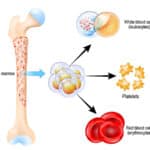

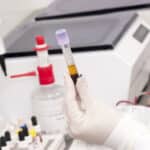



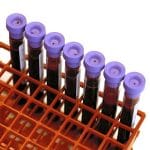

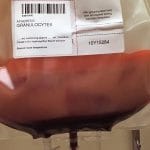
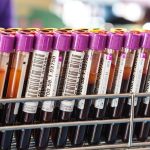
My friend Sue was saying that she is group AB. I wonder if she knew that both Rob Race and Ruth Sanger (of “Blood Groups in Man” fame) were also both group AB!
Another GREAT podcast! Thank you both.
Pretty sure I was not aware of that, either, Malcolm! As always, thanks for the perspective (both historical and practical), and for the kind words. Always appreciated and never taken for granted, I promise.
-Joe
Hello Joe,
Thank you again for this fantastic episode. Thanks to you too Sue.
Sue said something about the gel test not being approved by the FDA to detect ABO incompatibilities. Why is it that the tube test is better than the gel test to detect ABO incompatibilities? I have heard it once, but I didn’t understand why. Do you have any litterature about this you could recommend?
At my hospital (in Norway) we use electronic crossmatch to all patients with negative antibody screening and antibody screening history.
For those with positive screening and/or antibody history we run a full serologic crossmatch with immediate spin in a gel card called NaCl, Enzyme and Cold Agglutinins with a neutral gel suspension from Biorad. And we perform the AHG phase on an IgG + light chains card also from Biorad. We use LISS diluent to prepare the cell suspension and this suspension is used in both cards.
Very interesting your discussion about ABO incompatibility in platelet transfusion. I understood that you guys in the US don’t use random platelet concentrates? We use mostly this kind of platelet here. In our facility we produce buffy coat derived platelet concentrates with platelets from 4 donors. We try to use ABO compatible platelets to all patients, but it is not always possible to do that. We use O platelets as a second choice if we don’t have ABO compatible platelets. We use a platelet additive solution (PAS) in our PLT concentrates that replaces a portion of the plasma used to store platelets. We don’t ever titer our platelet concentrates and as long as I know we don’t experience notable hemolysis in our patients.
We try however to be more careful with PLT-transfusion in kids and do everything we can to transfuse ABO compatible. Our PLT-apheresis are actually reserved to children.
Thanks again for this beautiful job Joe.
Many greetings 🙂
Mariana
We have everything on our unit tag that Sue mentioned, except crossmatch expiration date. We do have unit number and unit expiration date in additional. Where can I find the regulation for needing the crossmatch expiration date on the tag?
Thank you so much for this podcast. Its really useful for me to listen to these podcasts.